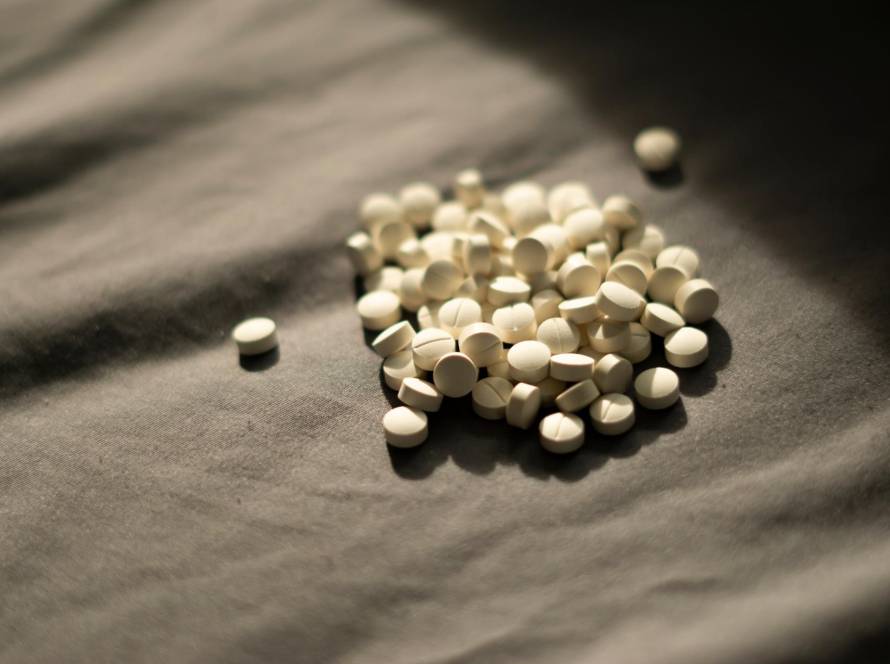Astaxanthin is nature’s most powerful antioxidant. This remarkable compound can neutralize harmful free radicals 100-500 times better than Vitamin E. Its free radical inhibitory activity is 10 times stronger than related compounds like β-carotene and lycopene.
This piece will walk us through everything about astaxanthin’s health benefits. We’ll cover its neuroprotective and cardioprotective properties, possible side effects and the best ways to supplement. Our scientifically-backed information will help to understand how this powerful antioxidant supports our health experience.
What is astaxanthin and where does it come from?
Astaxanthin belongs to the xanthophyll class of carotenoids. This unique molecule has two β-ionone ring systems linked by a polyene chain. Its oxygenated keto and hydroxyl groups give it exceptional antioxidant properties. Tests showed that astaxanthin has 500 times the antioxidant activity of vitamin E.
Natural sources: algae, seafood and yeast
Only a select group of organisms naturally produce astaxanthin. The main producers are:
- Microalgae: Haematococcus pluvialis, Chlorella zofingiensis and Chlorococcum species;
- Yeast: Xanthophyllomyces dendrorhous (formerly Phaffia rhodozyma);
- Bacteria: Paracoccus carotinifaciens and Agrobacterium aurantiacum.
Aquatic creatures like zooplankton and krill feed on these organisms. Salmon, trout, shrimp and crustaceans then eat these smaller creatures. Wild salmon, especially sockeye salmon, along with shrimp, krill and crayfish are great dietary sources.
Synthetic vs. natural astaxanthin
Over 95% of today’s commercial astaxanthin comes from synthetic production through a Wittig reaction using petrochemicals. Natural astaxanthin makes up less than 1% of the global market, but it offers these key advantages:
- Stereochemistry: natural astaxanthin mostly contains the more bioavailable 3S, 3S‘ stereoisomer. Synthetic astaxanthin mixes three different isomers;
- Potency: natural astaxanthin’s antioxidant capacity is 20 times stronger than its synthetic version;
- Esterification: natural astaxanthin is 95% esterified, making it more stable. Synthetic astaxanthin exists only in free-form;
- Safety: people have safely used natural astaxanthin from H. pluvialis for over 20 years without side effects.
Why Haematococcus pluvialis is the gold standard
Haematococcus pluvialis, a freshwater unicellular microalga, stands out as nature’s richest source of astaxanthin. Here’s what makes it the gold standard:
- Highest concentration: it builds up to 3-5% astaxanthin by dry weight, nature’s highest concentration;
- Optimal form: its astaxanthin comes in an ideal ratio: 70% monoester, 25% diester and 5% free form;
- Regulatory approval: the USA, Japan and several European countries approve H. pluvialis astaxanthin as a dietary supplement;
- Commercial viability: H. pluvialis produces astaxanthin under stress from high light, nutrient deficiency or increased salinity.
How astaxanthin works in the body
Astaxanthin’s remarkable protective powers come from its unique molecular structure and how it positions itself in the body. This amazing carotenoid works through multiple mechanisms that work together to deliver its well-known health benefits.
Antioxidant mechanism and free radical scavenging
Astaxanthin shows exceptional strength as a free radical neutralizer at the molecular level. Research proves it effectively scavenges diphenylpicryl-hydrazyl (DPPH) and galvinoxyl free radicals. Its ability to quench singlet oxygen increases with dosage. Studies show it neutralizes singlet oxygen 550 times better than α-tocopherol.
What sets astaxanthin apart is its status as a “pure antioxidant.” Many antioxidants like vitamins C and E can become pro-oxidants under severe oxidative stress. Astaxanthin doesn’t just neutralize reactive oxygen species (ROS) directly by:
- Donating electrons to unstable molecules;
- Creating non-reactive products by bonding with free radicals;
- Taking in high-energy electrons through its conjugated double bond chain.
It also boosts our body’s natural antioxidant systems by triggering the Nrf2 pathway, which increases protective enzymes like glutathione.
Crossing the blood-brain and blood-retina barriers
Astaxanthin has a special quality, it can cross both the blood-brain and blood-retinal barriers. This fat-soluble nature lets it build up in the hippocampus and cerebral cortex. The result is direct protection for neural tissues and retinal cells against oxidative damage.
Astaxanthin shields these sensitive tissues from various threats, particularly blue light damage in retinal cells and oxidative stress in neurons. Research shows it helps nerve cells regenerate by boosting vital proteins like BDNF (brain-derived neurotrophic factor) and GAP-43.
Cell membrane protection and mitochondrial support
The most fascinating aspect is how astaxanthin’s molecular structure lets it sit perfectly across cell membranes. Its polar ends overlap with the membrane’s water-loving regions while its non-polar middle lines up with the membrane’s interior. This unique arrangement makes astaxanthin work like a “molecular lightning rod”, it moves dangerous free radicals along its carbon chain where other antioxidants can neutralize them outside the cell.
Astaxanthin also specifically guards mitochondria, the powerhouses of our cells. It concentrates within mitochondria, protects their membrane structures and stops cytochrome c release that could trigger cell death. This helps maintain mitochondrial ATP production, which supports energy production throughout the body.
Astaxanthin health benefits backed by science
Science has shown many health benefits of astaxanthin through careful clinical trials and lab research. Let’s look at how it affects human health, based on solid evidence.
Skin protection and anti-aging effects
Astaxanthin delivers remarkable skin benefits. One study found that 4mg daily for four weeks helped rejuvenate skin by lowering lipid oxidation and cornification. The compound shields skin from UV damage by reducing inflammatory cytokine production and blocking matrix metalloproteinase-1 release from dermal fibroblasts.
Eye health and visual performance
Astaxanthin’s ability to cross the blood-retina barrier makes it especially good for eye health. Research shows it helps prevent vision problems from digital screen use. Children with digital eye strain saw their computer vision syndrome scores improve by 27% after taking 4mg daily for 84 days, compared to placebo. The compound also helps maintain healthy eyes by boosting ocular blood flow.
Cognitive and neuroprotective benefits
Astaxanthin is one of few compounds that can cross the blood-brain barrier, making it great for brain protection. Taking 12mg daily for 12 weeks helps shield against age related cognitive decline. Research shows it stops neuronal death, reduces glutamate toxicity and fights homocysteine buildup. The compound activates brain-protective pathways.
Cardiovascular and metabolic improvements
Heart health markers improve with astaxanthin supplementation. A pilot study showed that after three months, patients with heart failure saw their left ventricular ejection fraction rise by 11.4% (from 34.1% to 38.0%) and could walk 39.4 meters further in 6 minutes.
Muscle endurance and recovery
Astaxanthin boosts physical performance in several ways. Studies show it helps burn more fat during exercise, which saves carbohydrates and makes workouts more efficient. Older adults (65-82 years) who combined astaxanthin with endurance training saw improvements in muscle endurance, fat burning and exercise efficiency. The compound also guards against exercise related muscle damage by lowering inflammation markers.
Immune system modulation
Research confirms astaxanthin helps regulate immune function by:
- Boosting both cell-mediated and humoral immune responses;
- Making natural killer cells more effective;
- Increasing T and B cell numbers;
- Lowering inflammatory markers like C-reactive protein;
- Reducing DNA damage indicators.
Astaxanthin supplements: safety and absorption
We need to understand proper dosing, timing and quality to get the most from astaxanthin supplements. The way we take this powerful carotenoid matters more than just the amount we consume.
How to take astaxanthin for best absorption
Our body absorbs astaxanthin better with fats. Take it with meals that include healthy fats like:
- Olive oil;
- Avocados;
- Nuts;
- Fish.
This simple step makes absorption 2-4 times better than taking it on an empty stomach. A regular schedule helps keep steady levels in our system. Blood levels peak 8-10 hours after taking it, so breakfast time works best for most people.
Side effects and safety profile
Astaxanthin has proven remarkably safe. None of the 87 human studies found safety concerns with natural astaxanthin supplements. Side effects at normal doses are rare and usually mild:
- Slightly more frequent bowel movements;
- Red-colored stool (at doses ≥20mg);
- Mild stomach discomfort.
Natural astaxanthin from H. pluvialis is safer than synthetic versions. Synthetic forms lack extensive safety testing and many health authorities haven’t approved them.
Astaxanthin stands without doubt as one of nature’s most remarkable antioxidants. This powerful carotenoid provides detailed protection against oxidative stress at levels nowhere near common antioxidants like vitamin E. Its unique molecular structure protects cell membranes from both inside and outside at the same time, a rare feature in the antioxidant world.


